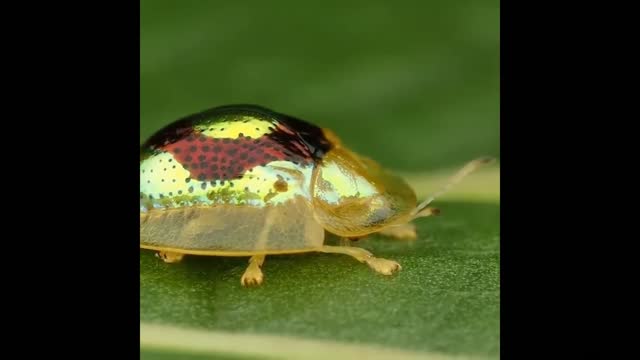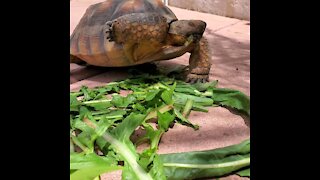Premium Only Content

Tortoise Beetle & Golden ,Tortoise from Ecuador
Cute Tortoise Beetle & Golden,Tortoise from Ecuador.
Adorable Tortoise Beetle & Golden Tortoise.
But make no mistake they are killers.
Ever seen a tortoise the size of a fly? How about a golden one that can actually fly? Well, today’s your lucky day, as you get to discover one of nature’s shiny treasures – the golden tortoise beetle.
Before you open a fresh tab to search if these adorable critters are real or just the result of digital editing, make sure you use the species scientific name, aspidimorpha sanctaecrucis, as “golden tortoise beetle” is a really common name shared by a number of beetles, like charidotella sexpunctata, among others. What makes this species of beetle special is that the gold pattern on their transparent protective carapace actually makes them look like tiny tortoises.
Few insects boast a truly gold-colored body. The Golden Tortoise Beetle is even more remarkable because it can actually change its coloring at will thanks to microscopic cavities in its cuticle that house pigmentation. The beetle's metallic sheen can be dulled, and that lovely gold can become brown. Upon death, the metallic glimmer fades. Like a tortoise, the body of the beetle is humped, or rounded, as if the wing coverings were actually a shell. The bottom edges of the beetle's eltyra are transparent, like glass.
The shiny, metallic Golden Tortoise Beetle is one of many Tortoise Beetles that feed on popular garden vines. Morning glory, sweet potato vines, bindweed and other plants in the Convulvulaceae family. The adults and their larvae chew on leaves and flowers, giving the plants a less-than-perfect appearance. The amount of damage is mild though, and it rarely causes the plant to die. Many gardeners keep the beetles around just to look at them.
Eggs are laid in the spring. Larvae hatch and immediately begin eating the foliage of the plant they are on. They are round like adults, but are usually a pale greenish color and have a fringe bordering their entire body. They will molt a few times before taking on their adult form. Larvae tend to drag their old 'skins' at their rear until they finally pupate on a leaf. The adults feed in the autumn and overwinter.
-
 0:15
0:15
Alpha1Over137
4 years agoDesert Tortoise
471 -
 0:53
0:53
theshamansgift
4 years agogopher tortoise stroll
39 -
 LIVE
LIVE
megimu32
2 hours agoOTS: Movie Tie-In Games + Remakes: Let’s Play Memory Lane
73 watching -
 LIVE
LIVE
Adam Does Movies
9 hours agoTalking Movies + Ask Me Anything - LIVE
71 watching -
 1:17:18
1:17:18
Glenn Greenwald
1 day agoWhat are CBS News' Billionaire Heirs Doing with Bari Weiss? With Ryan Grim on the Funding Behind It; Europe Capitulates to Trump Again | SYSTEM UPDATE #494
83.3K55 -
 1:43:49
1:43:49
RiftTV
3 hours agoCNN Calls Black NY Shooter WHITE, Cincinnati FATIGUE | The Rift | Guest: Braeden Sorbo, 2Protects1
22.8K10 -
 4:21:04
4:21:04
LumpyPotatoX2
4 hours agoKilling Floor 3: Rampage & Chaos - #RumbleGaming
2.33K -
 LIVE
LIVE
BrancoFXDC
4 hours agoPlaying Ranked Warzone - Pursuit of Diamond Rank
69 watching -
 1:11:41
1:11:41
Omar Elattar
5 hours agoThe Brain Experts: "Your Overthinking Problem Has A Physical Solution & We Can Show You!"
6.92K1 -
 LIVE
LIVE
Mattnifico
4 hours agoREPLAYING EVERY FORZA HORIZON GAME - Forza Horizon 1 (Part 2)
20 watching